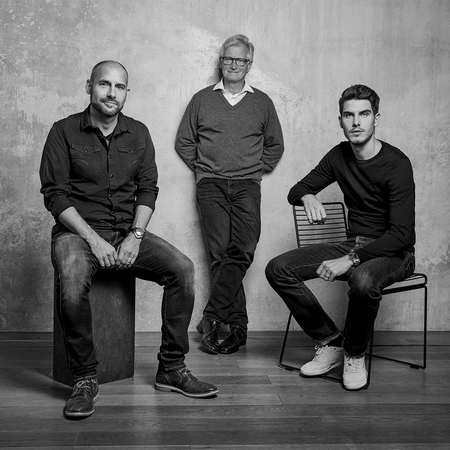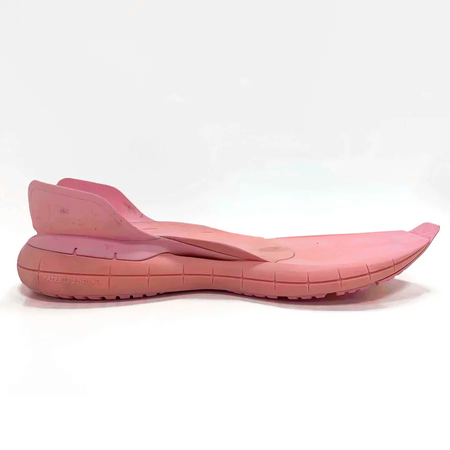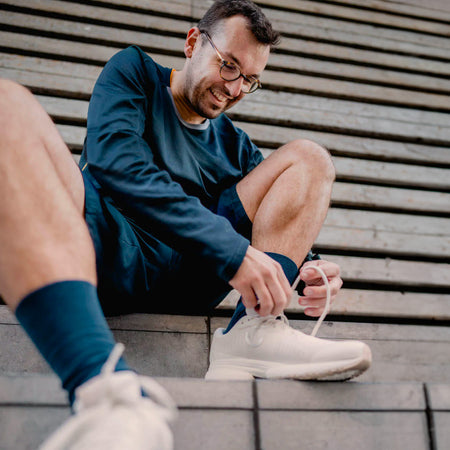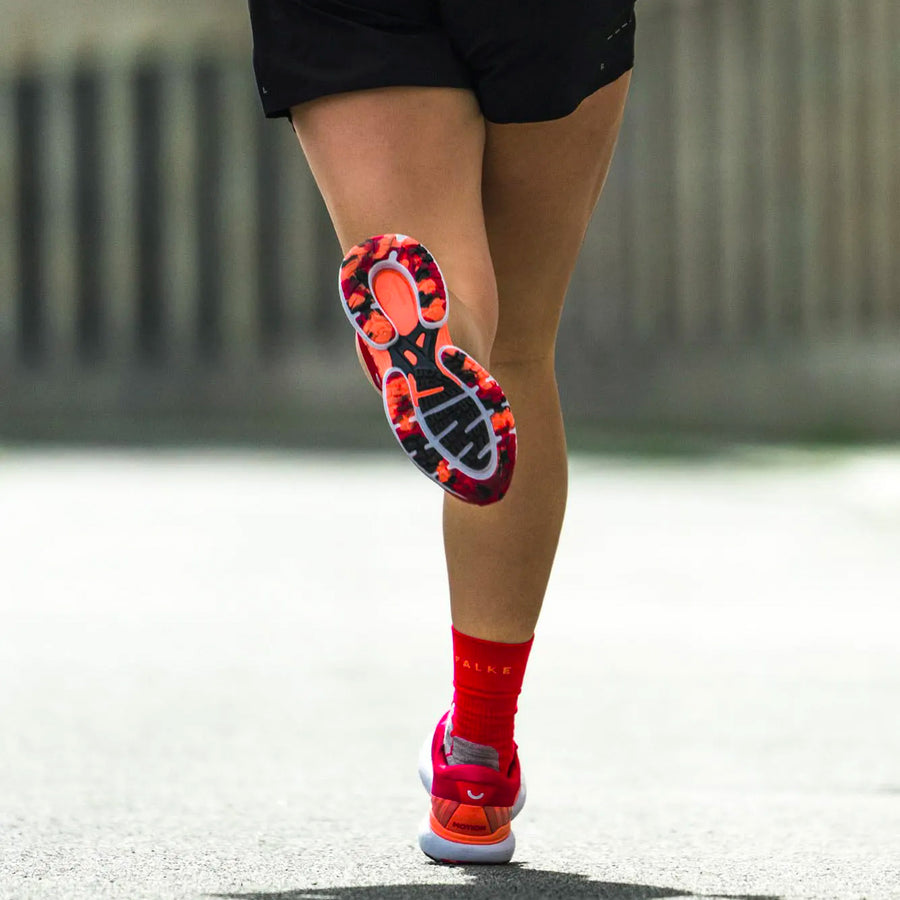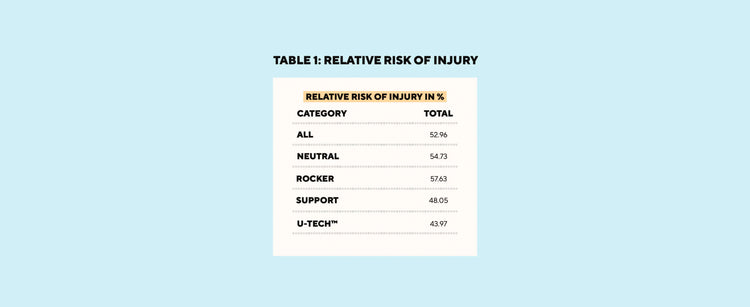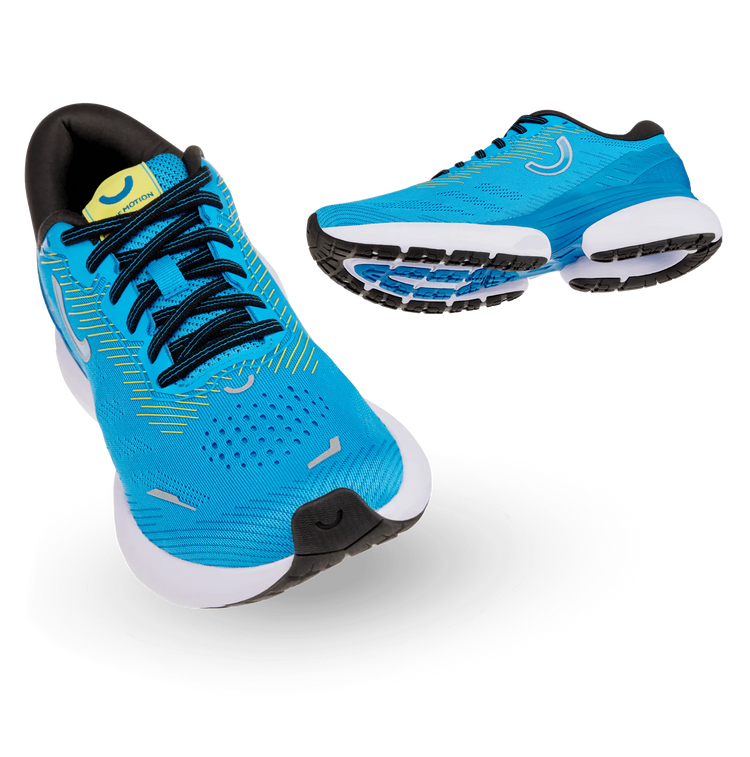RUN BETTER RESEARCH STUDY:
U-TECH™ REDUCES THE RISK OF RUNNING INJURIES BY MORE THAN 50%
Reducing the risk of injury by more than half sounds like hard work, a lot of training, and – if we’re being honest – almost utopian. Achieving this by simply choosing the right running shoes seems far too simple at first glance. Yet the results of the Run Better Research Study show just that. Specifically, our running shoes, or, more precisely, the midsole technology we run with, influence the risk of developing running injuries. By up to 50% – particularly at the knee and Achilles tendon. Impressive findings on where we get injured, why we get injured – and what we can change. An overview.
Running injuries are still a nagging issue that runners have to deal with far too often, even today. We have to cancel planned runs, skip training. Because if we are injured, we simply have to take a break from running. The reason for running injuries is mainly overload or fatigue of our tissues, so-called overuse injuries.
The recently conductedRun Better Research Studyshows that too many runners still suffer from running injuries. Of the nearly 1,700 participants in the study, 52.96% got injured at least once within a year. Runners were considered injured if they had to miss at least one running session due to pain or discomfort. This applied to more than one in two.
But what are actually the reasons why we get injured?
SHOE TECHNOLOGY DETERMINES THE RISK OF RUNNING INJURIES
To find out, the participants filled out a questionnaire looking back on their running behavior over the past twelve months. The data collected were age, gender, height, and body weight. With regard to their running behavior, the participants also indicated the running sessions they had completed per week, the distance they had run per week, their running experience in years, and the running shoes they had worn. The German running magazine “LÄUFT” evaluated the data by assigning the above-mentioned running shoe models to the four different sole technologies neutral, rocker, support, and U-TECH™ from True Motion.
The study participants had to meet certain minimum requirements. All 1,700 runners had to have run at least once a week, with a total distance of at least ten kilometers per week. A running shoe with the same sole technology had to be worn in more than 75% of the running sessions.
The result of the evaluation: in all running injuries recorded, only the running shoe worn, i.e., the midsole technology used in it, had a significant influence on the risk of injury. Significant means that the result is so unambiguous that it cannot have been obtained by chance. Furthermore, the study shows that in the case of knee injuries, running experience also had a minimally significant influence in addition to sole technology. The same is true for gender with regard to Achilles tendon injuries.
Furthermore, when we run, we not only put stress on our lower extremities, but also on our backs. Overloads and incorrect loads as well as fatigue fractures can also lead to injuries here in the sense of overuse injuries, which prevent us from running. At 14.4%, the risk of injury was highest in neutral running shoes. Runners who ran with U-TECH™ complained a lot less about back problems.
In contrast, fewer participants had problems with their hips. Here, slightly more than one in ten runners localized an injury that led to a break in running of at least one training unit. Runners who ran in neutral shoes were also most susceptible to injury in the hip area (11.14%), while wearing running shoes with U-TECH™ reduced the risk of running injuries by four percent.
Many runners are also familiar with injuries of the shin, including so-called shin splints. No wonder they are considered typical running injuries. Although the shin was the least frequently injured structure in the comparison of body regions, the risk of injury was also lowest here with U-TECH™ (1.42%) and most pronounced with neutral shoes (6.61%).
To summarize: Runners are most frequently injured at the knee. The risk of injury was highest in stability shoes with support technologies. In relation to all other body regions, running in neutral shoes made them most susceptible to injury. U-TECH™ technology, on the other hand, can be identified across the board as the lowest-risk sole technology in terms of running injuries. This is true for running injuries overall, but also individually for injuries to the different body regions.
But why is that?
U-TECH™: FEWER INJURIES FOR ALL RUNNERS
True Motion’s U-TECH™ technology has been inspired by human structures in form and function – such as the menisci in the knee or the fat pad around the heels. Based on this, U-TECH™ technology is a U-shaped midsole in the rearfoot. This design allows the heel to sink into the designated recess during transition. In this way, the forces that occur during running are centered and aligned through our body – as nature intended. Potentially damaging rotational forces in the knee are rendered harmless and a significant factor in the development of knee injuries is eliminated. Or to put it another way: U-TECH™ allows us to move naturally.
The results of the Run Better Research Study show that this technology works regardless of whether we are supinating, pronating, or a neutral runner. There is no need to differentiate between runner types. And that is also logical. Because U-TECH™ harmonizes with the individual movement dynamics of all runners instead of interfering with them.
That’s why the running shoe models with U-TECH™ don’t differ according to runner or gait type – but according to the intended usage. Depending on whether your next run should be as comfortable and cushioned as possible, a little faster, or off-road, different running shoe models are a particularly good fit.
Imagine you want to run several kilometers at a stretch every day. No matter if it’s sunny, rainy, or stormy. Once across the African continent – from north to south. Over asphalt, dirt roads, and smaller trails off the main arteries. Sounds like an adventure and a physical feat, right? Adventurer Fritz Sitte wants to put the whole thing into practice. Get to know Fritz and learn what it means to prepare for an extreme run across Africa. Be curious about his very personal running story.








